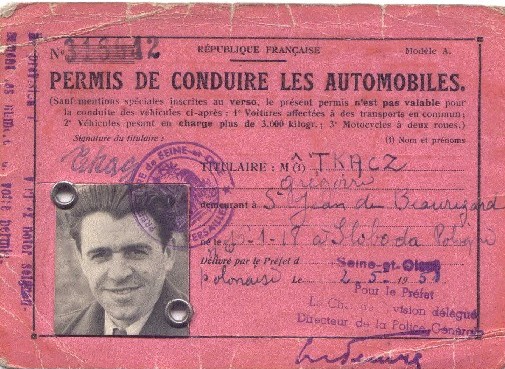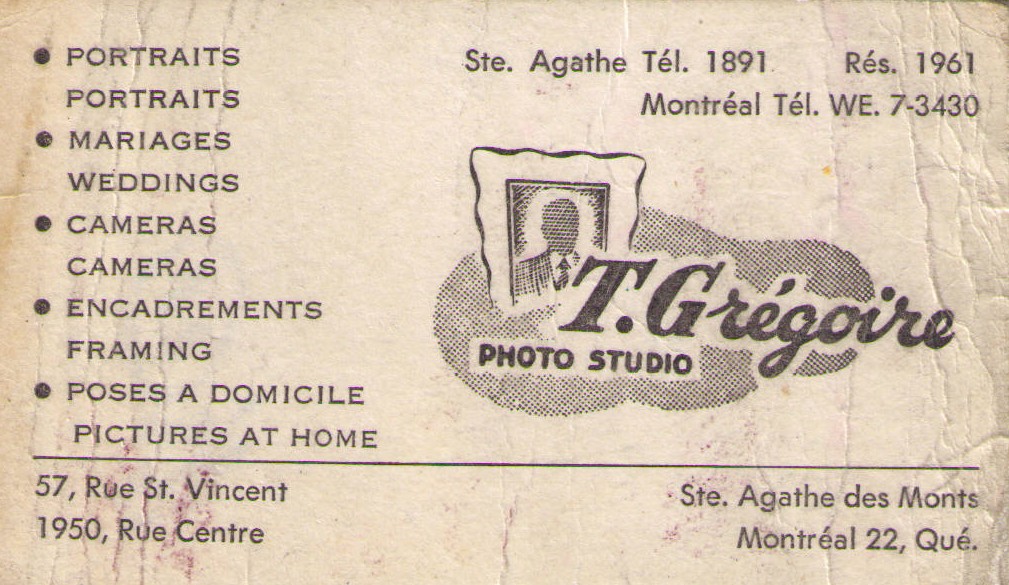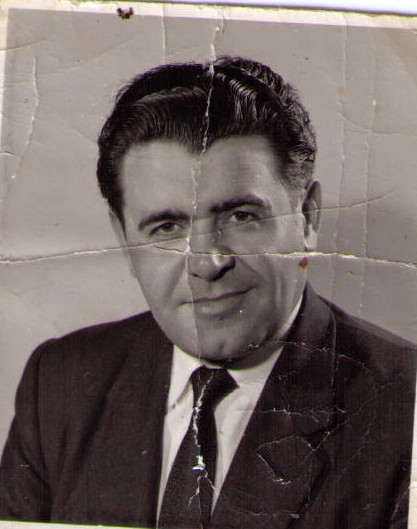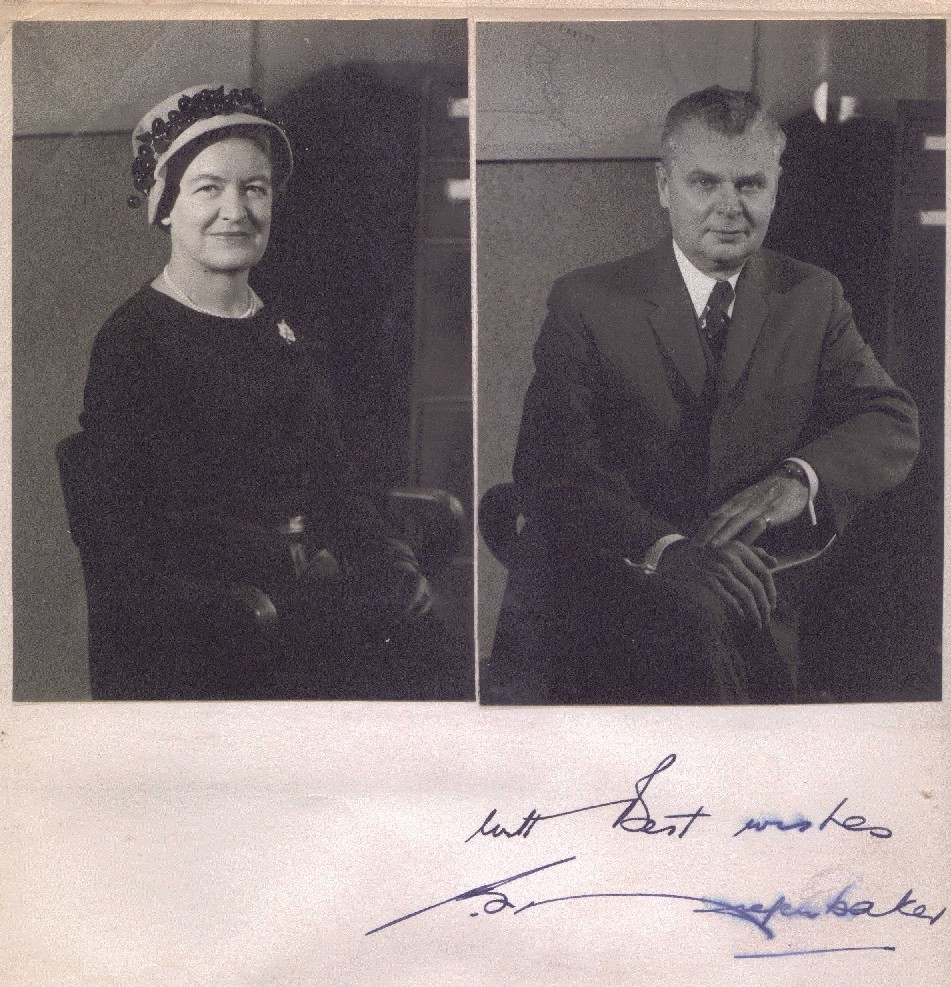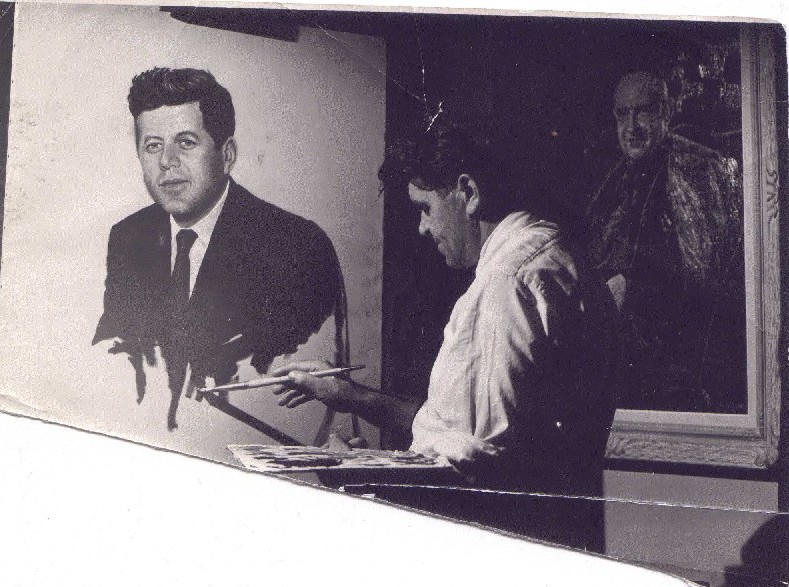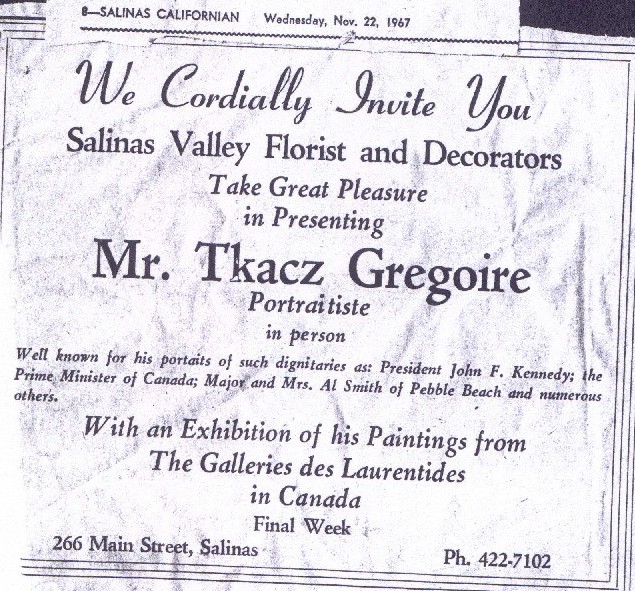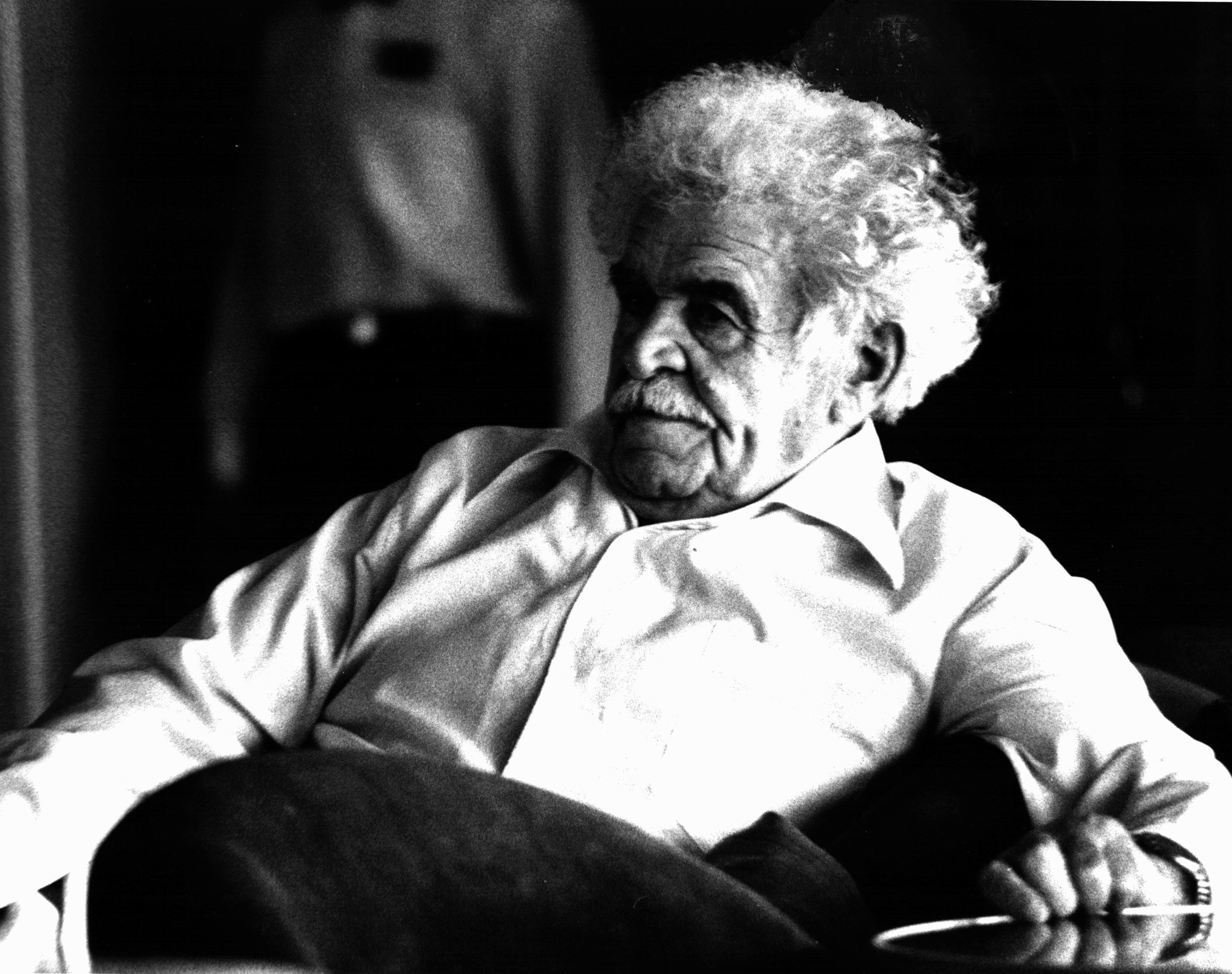|
 |
|||||
Biography |
|||||
|
Gregoire Tkacz (pronounced T’Catch) was born in rural western Ukraine in 1918 as the third of five children. As the oldest boy, he learned about hard work from an early age, being well-versed in all aspects of farming. However, the farming lifestyle (and the dirt) did not align with his interests. In 1937, at the age of 19, he jumped at the opportunity to join his older sister in France, who had moved there some years earlier. “My most vivid memory was of the paved roads. As soon as I got off the train in France I borrowed a bicycle -- it was like riding on a cloud.” A far cry from the dirt roads he had known until then. The art career of Gregoire began to emerge in the late 1930s, inspired by the people and places he encountered in France. In 1939, at the age of 21, Edouard Dalladier, the Prime Minister of France, posed for him. However, the war rapidly halted his artistic ambitions. During the war, the Tkacz siblings had not heard from their parents for several months, and so Gregoire began a journey to Ukraine to find out what had happened to them. Unfortunately, he never reached them. He was arrested, and spent 10 months in a concentration camp. “Over 120 prisoners were stored in a single room. I was held among doctors, lawyers, academics.” The hunger he experienced while in captivity was etched in his mind for the remainder of his days. “I would have gladly eaten three-week-old potato peels boiled in water.” Then one day all the prisoners were being transferred, possibly to be executed. The prisoners marched along a deserted road, when “a gunfight erupted between the Germans and Russians. Several prisoners were hit in the crossfire, but at least six of us managed to get away.” Gregoire traveled back to France, via Belgium, and resumed his art career after the war.
Driver’s license, France, 1951 His thirst for travel led him to Montreal in 1951, becoming a Canadian citizen in 1958. In the post-war period in Canada weddings were numerous, and so his first enterprise involved setting-up a photography studio specializing in wedding portraits. Initially applying for a business license under the name “Gregoire Tkacz Photo Studio”, he was informed by the licensing clerk that no one here would know how to pronounce “Tkacz”, and so was urged to reverse his first and last names. This is how “T. Gregoire Photo Studio” was born.
Business card, circa 1956 His first studio was located at 1950 Centre Street in the working-class Pointe St-Charles district. “Business was very good. There were three churches (one French, one English and one Polish) within two blocks, so I had no trouble attracting wedding business.” The booming photography business even allowed him to establish a satellite photo studio in Ste. Agathe, a tourist destination in the Laurentian mountains about one hour north of Montreal. However, the hectic pace of maintaining two studios, combined with increasing competition in the photography business, prompted him to return to his first love: painting.
Tkacz Gregoire, circa 1958 In 1959, upon seeing a portrait of Prime Minister Diefenbaker in the newspaper, he thought that he could easily do a better job, and so promptly went to Ottawa to set about doing just that. He eventually succeeded in getting both Prime Minister and Mrs. Diefenbaker to pose for him. Both paintings were sold, although one portrait of the Prime Minister remained in the artists’s personal collection. It was around this time that he began to sign his artwork “Tkacz Gregoire”.
Mr. and Mrs. Diefenbaker, 1959 Recognizing that art required targeting a different clientele than photography, he established his first art studio on Sherbrooke Street in Montreal’s upper-class Westmount district, and then moved it to Decarie Boulevard in the same area in the early 1960s. Doctors, judges, politicians and entertainers were the targeted clientele. Some notable portraits around this time include those of Leon Trepanier, Gratien Gelinas, Pierette Champoux, Emile Vaillancourt, Juliette, His Worship Sarto Fournier, Me Jean-Noel Lavoie, Mike Starr, Alphonse Couturier, Paul Comtois and Claude-Henri Grignon. To cement his reputation as a leading portraitist, Gregoire headed to Washington in 1962 to paint his most famous subject: President John F. Kennedy. A 40-minute audience with the President was granted, in large part due to a letter of introduction provided by Prime Minister Diefenbaker’s office (see “JFK Portraits” for complete details). Given that this would be the most important portrait of his career, Gregoire spent almost one year on it. Over that period, two portraits were created, with the President in different poses. The final product was delivered to the White House in October 1963, with a formal unveiling ceremony being planned for later that year. Unfortunately, the tragic death of the President in November led to a change in plans.
Gregoire working on John F. Kennedy Portrait #2, 1962-63 In 1964, plans for the Decarie Expressway in Montreal forced Gregoire to vacate his Decarie Boulevard studio. He relocated his studio in the village of St-Jovite, within minutes of Mont-Tremblant in the heart of the Laurentian mountains. It was at his “Galerie des Laurentides” that his famous Laurentian autumn landscapes were first exhibited, depicting the numerous colors of the native maple trees reflecting off myriad lakes in the fall. He lived in the Laurentians throughout the remainder of his art career, and the scenery never ceased to provide inspiration. In 1967, a four-month family vacation consisting of a drive around the United States was combined with a traveling art exhibition. Given that he was visiting many U.S. cities for the first time, he had to be creative in order to drum-up interest in his exhibitions. To this end, he managed to often receive free (and substantial) coverage in local newspapers by painting the portrait of the local mayor, which would be unveiled at the exhibition. Such mayoral portraits would often invariably be purchased, while visitors would walk away with paintings of impressive Canadian landscapes.
Exhibition notice in Salinas, California, 1967 The success of the 1967-68 U.S. tour prompted Gregoire to change his business strategy: Instead of waiting for customers to visit his art gallery, he decided to take his art gallery to his customers. He staged one-man exhibitions wherever he saw fit: throughout the provinces of Quebec and Ontario, and on several occasions in U.S. cities such as Detroit, Chicago, Cleveland and Buffalo. Paintings would be exhibited in venues such as hotel lobbies or upscale shopping malls throughout the late 1960s and 1970s. Among his more notable portraits during the 1970s are those of William Davis, the Premier of Ontario; William Dennison, the Mayor of Toronto; Patriarch Slipyj of Rome; and Paul Racine, a major commercial developer in Quebec City, who commissioned individual portraits of himself, his wife and eight children.
William Dennison and Tkacz Gregoire, 1972 From the above it is clear that Gregoire was a huge anomaly in the art world in many ways. First, mainstream artists of the day embraced modern, abstract themes; Gregoire favored classic landscapes and portraits (“I think about what I want to paint, and then I paint it; the abstract artist, on the other hand, first paints something, and then tries to figure out what it is.”). Second, Gregoire sold his own art, never relying on middlemen or third-party galleries. And finally, Gregoire never requested government art grants; he wanted his passion for art to be self-sustaining. To achieve all of the above he produced art of the highest quality that is extremely difficult to duplicate. His extensive use of the palette knife, for example, adds a depth to his work that is difficult to emulate. He also used the finest canvas, oil paints (Fragonard) and frames, most of which were hand-carved in Canada. For these reasons he never held “fire sales” of his work. Gregoire made a living selling paintings for over 20 years, and he did so by emphasizing quality over quantity. Gregoire stopped touring in early 1980, and stopped painting in 1981 following the death of his wife and his own onset of arthritis. He was 63 at this time. In 1986, the son of a former customer literally begged him to produce two portraits. He reluctantly did so, and in addition produced one final landscape. However, he was not satisfied with the final product due to his unsteady hand; the uncontrollable shaking even required him to have his young son sign the painting on his behalf, since he could not properly form the letters himself.
Tkacz Gregoire, 1998 (age 80) Gregoire passed away at the age of 84 in 2002 following a short illness, and is survived by three sons. The remaining paintings in the artist’s private collection are described on the Art Collection page. Requests for information about the artist, the work or queries regarding loans to museums can be sent to info@tkacz-gregoire.ca
|
|||||







